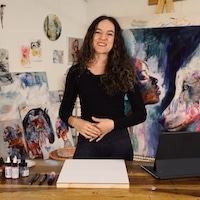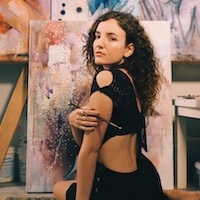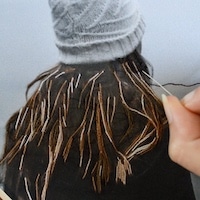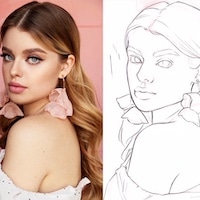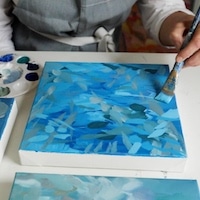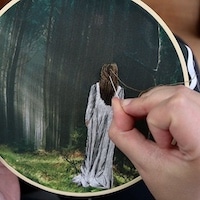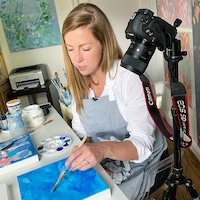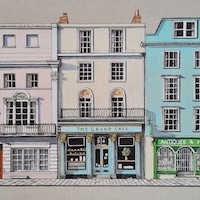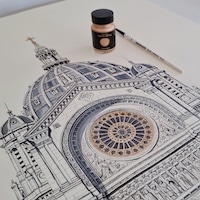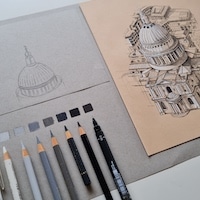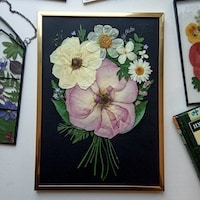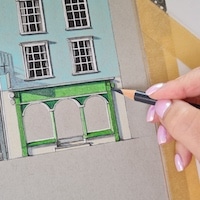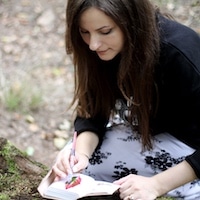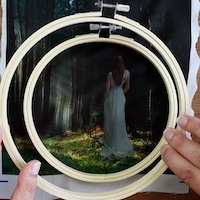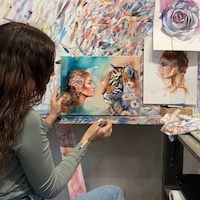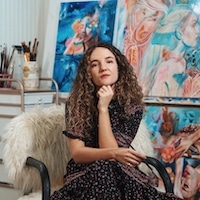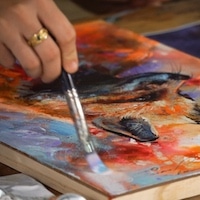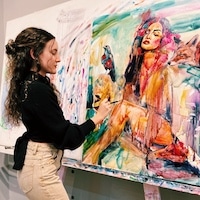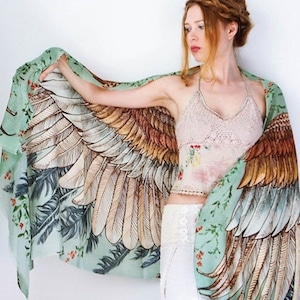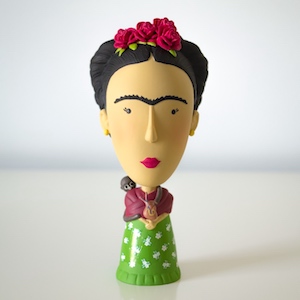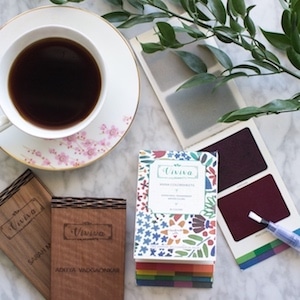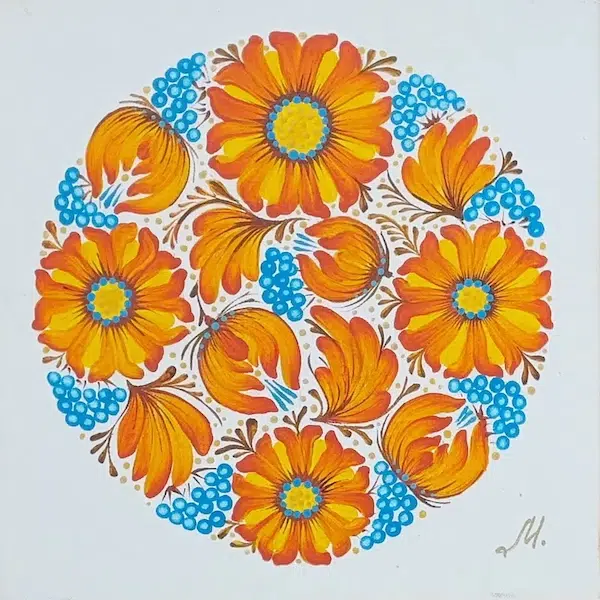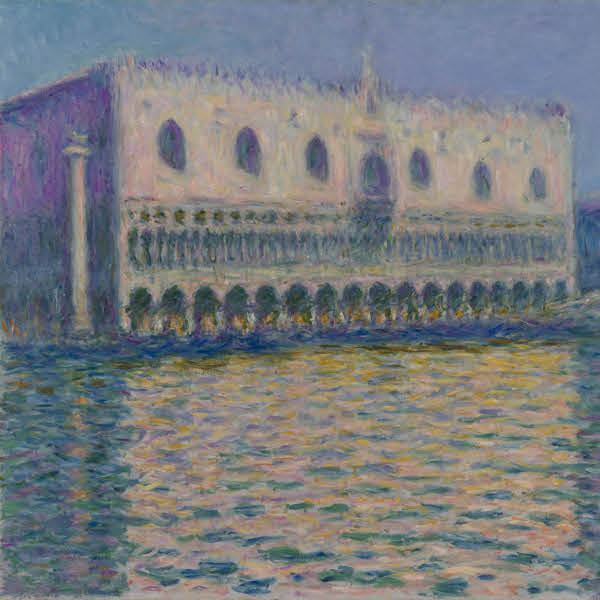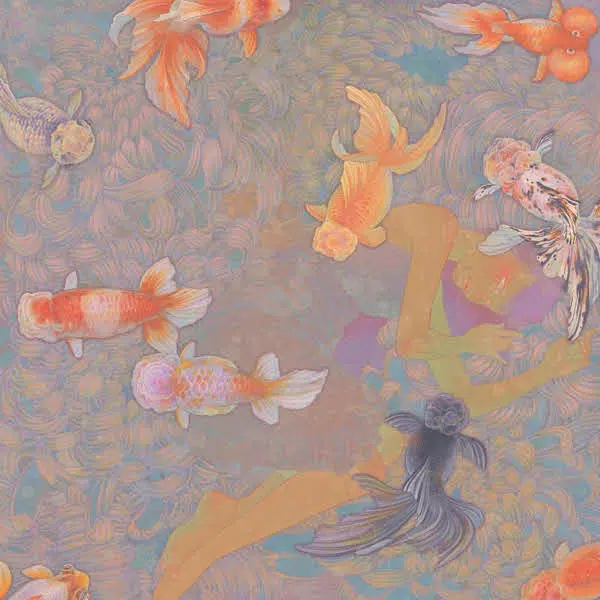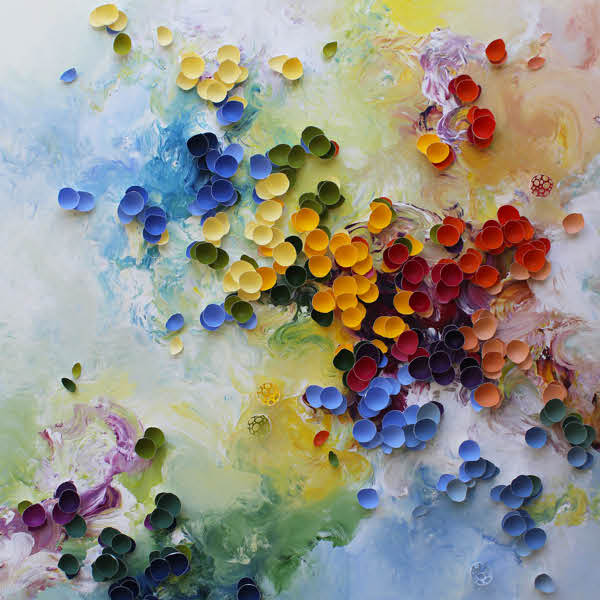
“Hoar-Frost, Peasant Girl Making a Fire,” 1888. (Photo: akg-images / Laurent Lecat)
When listing Impressionist artists, Édouard Manet, Claude Monet, Edgar Degas, Pierre-Auguste Renoir, and Camille Pissarro typically appear toward the top. But, when compared to his peers, Pissarro is often considered the “first Impressionist,” not just by art historians, but by fellow artist Paul Cézanne. It’s fitting, then, that Pissarro is the sole subject of an upcoming exhibition about Impressionism, opening at the Denver Art Museum later this month.
As his first major U.S. exhibition in over 40 years, The Honest Eye: Camille Pissarro’s Impressionism offers a sweeping overview of the artist’s impact upon one of the world’s most beloved art movements. The show gathers more than 80 paintings from nearly 50 international museums and private collections, illuminating the breadth and versatility of Pissarro’s practice. Paintings such as The Studio at Éragny demonstrates the artist’s command over texture and color, thanks in no small part to his loose brushstrokes and their expert placement across the canvas. View from my Window, Éragny may depict the same setting; but being created a few years prior, it betrays Pissarro’s experimentation with pointillistic surfaces, another prominent aesthetic during the late 19th century.
If these paintings from Éragny are any indication, Pissarro’s oeuvre revolves heavily around place and landscape. Pissarro lived in Éragny from 1884 until his death in 1903, dedicating countless artworks to the small village in northern France. Paris, of course, served as another source of inspiration, challenging the artist to further sharpen his architectural skills. The Pont-Neuf, painted just two years before his death, showcases one of the city’s many bridges, populated with crowds and horse-drawn carriages. In the distance are several Haussmannian buildings, filtered through such soft brushstrokes that they almost resemble a mirage. Morning Sun in the Rue Saint-Honoré is similar, unveiling a distinctly urban scene that fits nicely within the broader “flâneur” movement of that era.
Accompanying The Honest Eye is an assortment of public programming, in which curators, art historians, and even a horticulturalist discuss Pissarro’s work. One lecture explores Pissarro’s Caribbean roots, given that he was born on the island of St. Thomas in what was then the Danish West Indies (now the U.S. Virgin Islands). Another considers how the artist’s Impressionistic landscapes continue to “shape and challenge contemporary ideas of wildness, cultivation, and beauty,” according to the Denver Art Museum.
“A versatile artist, Pissarro embodied the role of insider, contributing to the establishment of Impressionism as a coherent avant-garde phenomenon while maintaining his artistic independence as he eschewed his peers’ choice of upper-class subject matter to depict scenes of the mundane,” the museum writes. “The Honest Eye reflects this dichotomy.”
The exhibition’s painted landscapes, cities, and portraits all reveal an artist influenced by many subjects and themes. The Honest Eye: Camille Pissarro’s Impressionism will open at the Denver Art Museum on October 25, 2025. The exhibition will be on view through February 8, 2026.
The first major U.S. retrospective of Camille Pissarro in over 40 years will open later this month at the Denver Art Museum.

“The Studio at Éragny, Pear Trees in Bloom,” 1894. (Photo: Heritage Images / Fine Art Images)

“View from my Window, Éragny,” 1886. (Photo: akg-images)

“Pont Boieldieu, Rouen, Rainy Weather,” 1896. (Photo: Bridgeman Images)

“The Pont-Neuf, Afternoon, Sunlight,” 1901. (Photo: bpk / Philadelphia Museum of Art / Art Resource, NY)

“Lordship Lane Station, East Dulwich,” 1871. (Photo: akg-images)
The Honest Eye: Camille Pissarro’s Impressionism gathers more than 80 artworks, offering a sweeping overview of the artist’s influential practice and enduring impact.

“The Garden of Les Mathurins, property of the Deraismes Sisters, Pontoise,” 1876. (Photo: akg-images / De Agostini Picture Lib. / J.E. Bulloz)

“Young Peasant Girl Wearing a Straw Hat,” 1881. (Photo: National Gallery of Art, Washington, D.C.)

“The Roofs of Old Rouen, Notre-Dame Cathedral, Overcast Sky,” 1896. (Photo: akg-images)

“Hoar-Frost at Ennery,” 1873. (Photo: akg-images / De Agostini Picture Lib. / G. Dagli Orti)

“Morning Sun in the Rue Saint-Honoré,” 1898. (Photo: akg-images)

“Self-Portrait,” 1873. (Photo: akg-images / Laurent Lecat)
Exhibition Information:
The Honest Eye: Camille Pissarro’s Impressionism
October 25, 2025–February 8, 2026
Denver Art Museum
100 W 14th Ave. Pkwy., Denver, CO 80204
Denver Art Museum: Website | Instagram
My Modern Met granted permission to feature photos by the Denver Art Museum.
Related Articles:
Claude Monet’s Stepdaughter Finally Gains Recognition in First-Ever U.S. Show
Splendorous Oil Paintings Evoke the Transcendent Joy of Being Immersed in Nature
Abstract Painter Creates Colorful Works Inspired by the Beauty of Stained Glass












